In Caitlin Cornell Holmes’ article, “At the Commencement of an Archive: The National Census of Writing and the State of Writing Across the Curriculum,” she explains the background of the National Census of Writing (NCW) and how it can allow us to archive information, potentially solving the problem of definition for the field (in this case, writing across the curriculum, or WAC) as well as benefiting methodological concerns among scholars who seek to represent WAC work in their scholarship and at their institutions. She argues for archives as a methodology for gathering and sorting research, noting that “[a]rchives—and the databases that constitute them—have since remained a focal point within rhetoric and composition as an emerging and evolving field, often calling attention to what is included and what is excluded” (p. 76). The CWP is a type of survey that collects and compares data from participant responses to a variety of WAC program-related questions.
 Holmes draws on Susan Wells to justify her support of the archive, and reminds us that we are no longer limited to traditional archival work due to recent technological advancements; searchable and generative databases should be considered archives. According to Wells, archival work “help[s] us to rethink our political and institutional situation,” thus allowing us to reconfigure “how we situate and represent our larger scholarly conversation and practices” (cited in Holmes, p. 77). Archival work, therefore, allows us to discover the definition of WAC and the methodologies we use to implement and assess WAC in spite of what our current situation is or is not.
Holmes draws on Susan Wells to justify her support of the archive, and reminds us that we are no longer limited to traditional archival work due to recent technological advancements; searchable and generative databases should be considered archives. According to Wells, archival work “help[s] us to rethink our political and institutional situation,” thus allowing us to reconfigure “how we situate and represent our larger scholarly conversation and practices” (cited in Holmes, p. 77). Archival work, therefore, allows us to discover the definition of WAC and the methodologies we use to implement and assess WAC in spite of what our current situation is or is not.
Holmes also draws on several scholars who have highlighted the problems of definition and methodology in their work. In her discussion of the definition of WAC programs, Holmes highlights Condon and Rutz (2012) who wrote, “As WAC’s thirty-plus-year history argues, the pedagogy and associated philosophy have become widespread, yet WAC as a phenomenon does not possess a single identifiable structure; instead it varies in its development and manifestation from campus to campus” (p. 80). This is, of course, because WAC programs have a tendency to be absorbed into other institutional structures such as composition programs or assessment initiatives (p. 86).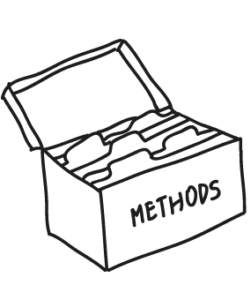
To address methodological concerns in the field, Holmes points out the struggles of several scholars, including Thaiss and Porter in their 2008 survey that sought to determine how many WAC/WID programs exist in the US. Holmes posits that “all efforts to survey and report. . . have been limited by the fixity of data represented in publication, the labor-intensive nature of collecting this information from individual schools, and the continuing ambiguity around how these types of writing programs are constituted and positioned within local contexts” (p. 78).
The CWP is not fail proof, however, as some respondents from the same institution gave conflicting answers, some respondents did not feel capable of giving information about their programs or requirements, and some respondents were sure there was a WAC program but did not know who at their institution would be able to provide information on it. It
seems that problems of methodology cannot fully be addressed until the field has defined itself. If this is the  case, then the field will continue to struggle to define itself as long as there are questions about methodology. So at what point do definition of a field and methodology depart from each other? Are the terms inseparable? Must our methodology be driven by the conventions of our field alone and vice versa? Given these questions after thirt-plus years of WAC research, we seem to still be at commencement.
case, then the field will continue to struggle to define itself as long as there are questions about methodology. So at what point do definition of a field and methodology depart from each other? Are the terms inseparable? Must our methodology be driven by the conventions of our field alone and vice versa? Given these questions after thirt-plus years of WAC research, we seem to still be at commencement.
Holmes, C. (2015). At the commencement of an archive: The national census of writing and the state of writing across the curriculum. The WAC Journal 26. Retrieved from http://wac.colostate.edu/journal/vol26/holmes.pdf




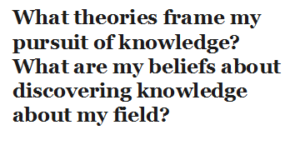 apprehensions about being called “professor” were affirmed when I was tasked with this blog post, and I began to realize the challenge—and value—in being able to articulate how I align myself theoretically and epistemologically. What theories frame my pursuit of knowledge? What are my beliefs about discovering knowledge about my field? Perhaps I have struggled to embrace my position as an educator because I had not before defined myself in these terms, and in doing so, I had not before claimed a position as a scholar in my field or in academia.
apprehensions about being called “professor” were affirmed when I was tasked with this blog post, and I began to realize the challenge—and value—in being able to articulate how I align myself theoretically and epistemologically. What theories frame my pursuit of knowledge? What are my beliefs about discovering knowledge about my field? Perhaps I have struggled to embrace my position as an educator because I had not before defined myself in these terms, and in doing so, I had not before claimed a position as a scholar in my field or in academia.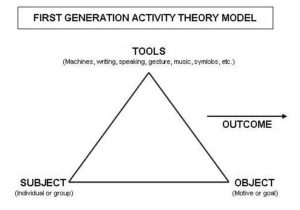
 ial opportunities, enable us to use our higher level thoughts in conjunction with our surrounding environments that are working to shape our knowledge and in turn shape our output (e.g. verbal and written speech) (Brufee) (Hewett and Ehmann, 2004, pp. 34-37). Social constructivism allows me to make the teaching and learning experience transparent, which is essential to successful transfer as students leave my English classroom and enter into classrooms of other disciplines.
ial opportunities, enable us to use our higher level thoughts in conjunction with our surrounding environments that are working to shape our knowledge and in turn shape our output (e.g. verbal and written speech) (Brufee) (Hewett and Ehmann, 2004, pp. 34-37). Social constructivism allows me to make the teaching and learning experience transparent, which is essential to successful transfer as students leave my English classroom and enter into classrooms of other disciplines.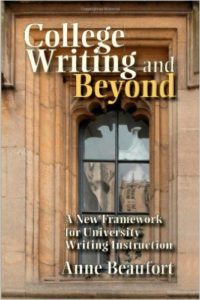 In
In 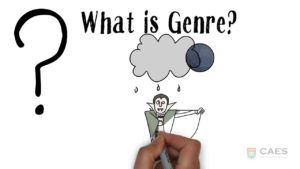
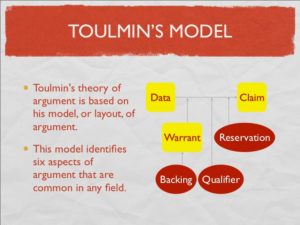
 The authors note that the evidence from their study suggests that the majority of the twelve students improved their ability to articulate claims and support them with evidence in FYC. In the WAC courses, the authors found that “[w]hile the students in this study encountered in WAC a diverse variety of genres, most of those genres required them to support claims with evidence. In this regard, students appeared to benefit from related instruction in FYC. That is to say, students’ development of ability to articulate and support claims in FYC appeared directly related to their ability to do so in their later WAC courses” (p. 46). But after reading this article, I have several questions for the authors about their
The authors note that the evidence from their study suggests that the majority of the twelve students improved their ability to articulate claims and support them with evidence in FYC. In the WAC courses, the authors found that “[w]hile the students in this study encountered in WAC a diverse variety of genres, most of those genres required them to support claims with evidence. In this regard, students appeared to benefit from related instruction in FYC. That is to say, students’ development of ability to articulate and support claims in FYC appeared directly related to their ability to do so in their later WAC courses” (p. 46). But after reading this article, I have several questions for the authors about their 
